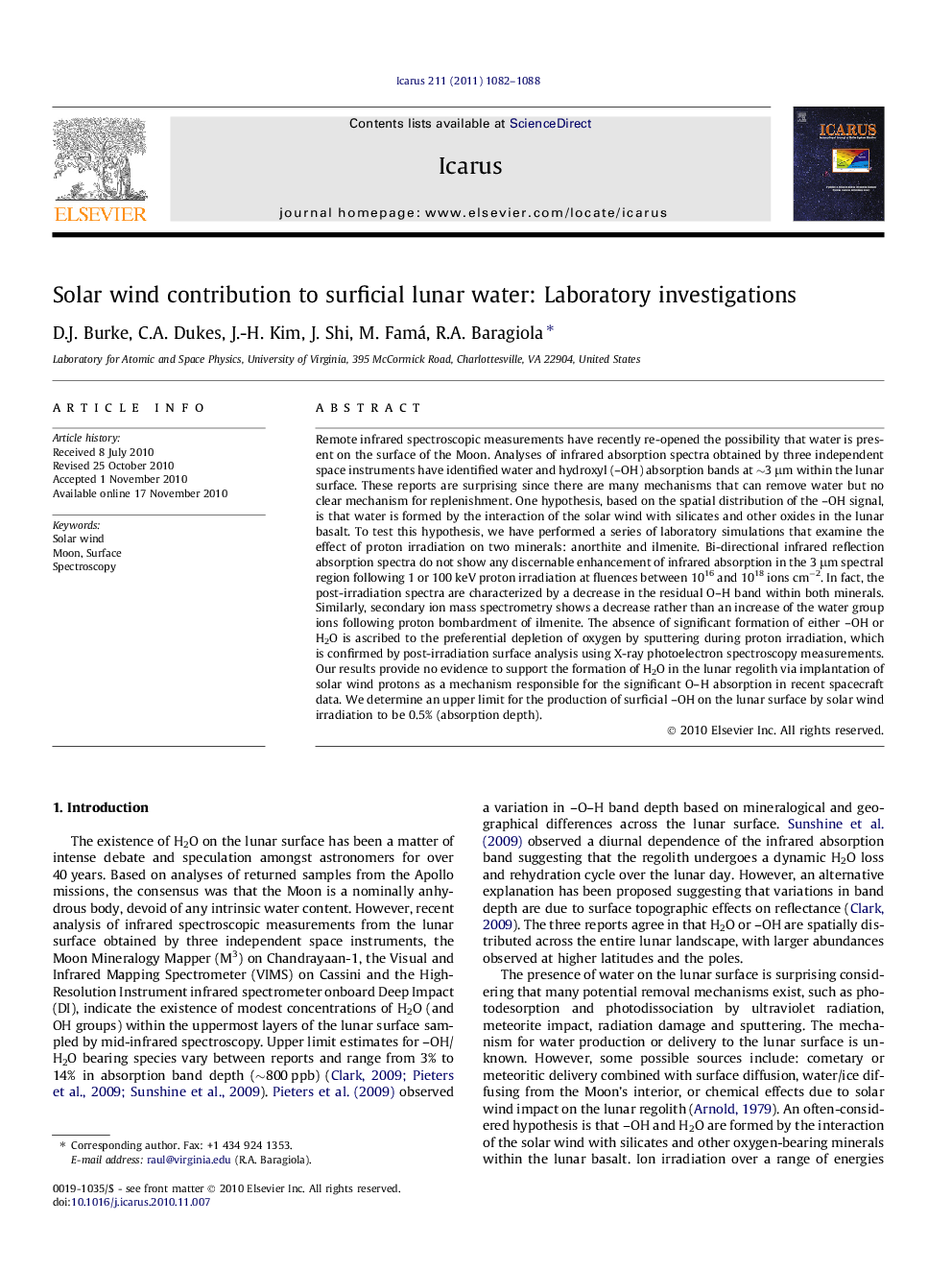| کد مقاله | کد نشریه | سال انتشار | مقاله انگلیسی | نسخه تمام متن |
|---|---|---|---|---|
| 1773942 | 1021152 | 2011 | 7 صفحه PDF | دانلود رایگان |

Remote infrared spectroscopic measurements have recently re-opened the possibility that water is present on the surface of the Moon. Analyses of infrared absorption spectra obtained by three independent space instruments have identified water and hydroxyl (–OH) absorption bands at ∼3 μm within the lunar surface. These reports are surprising since there are many mechanisms that can remove water but no clear mechanism for replenishment. One hypothesis, based on the spatial distribution of the –OH signal, is that water is formed by the interaction of the solar wind with silicates and other oxides in the lunar basalt. To test this hypothesis, we have performed a series of laboratory simulations that examine the effect of proton irradiation on two minerals: anorthite and ilmenite. Bi-directional infrared reflection absorption spectra do not show any discernable enhancement of infrared absorption in the 3 μm spectral region following 1 or 100 keV proton irradiation at fluences between 1016 and 1018 ions cm−2. In fact, the post-irradiation spectra are characterized by a decrease in the residual O–H band within both minerals. Similarly, secondary ion mass spectrometry shows a decrease rather than an increase of the water group ions following proton bombardment of ilmenite. The absence of significant formation of either –OH or H2O is ascribed to the preferential depletion of oxygen by sputtering during proton irradiation, which is confirmed by post-irradiation surface analysis using X-ray photoelectron spectroscopy measurements. Our results provide no evidence to support the formation of H2O in the lunar regolith via implantation of solar wind protons as a mechanism responsible for the significant O–H absorption in recent spacecraft data. We determine an upper limit for the production of surficial –OH on the lunar surface by solar wind irradiation to be 0.5% (absorption depth).
Research highlights
► Fast protons preferentially remove intrinsic oxygen and surficial OH/water from rough ilmenite and anorthite surfaces.
► Protons produce O–H infrared band depths <0.1% in lab samples and inferred <0.5% in lunar regolith.
► Reported band depths (3–14%) of lunar OH/water cannot result from solar protons.
Journal: Icarus - Volume 211, Issue 2, February 2011, Pages 1082–1088